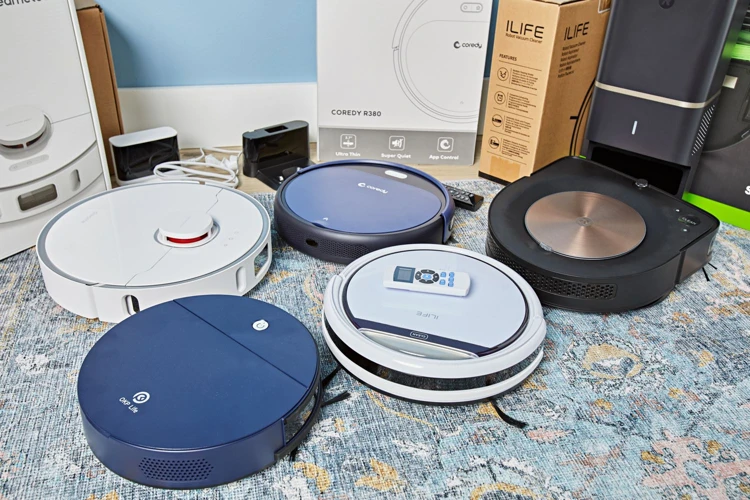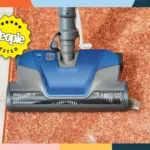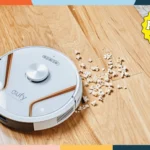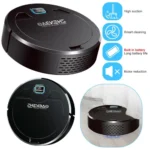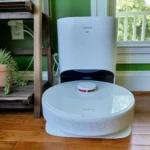Have you ever found yourself wincing in discomfort from the sound of your vacuum cleaner? The loud noise not only causes annoyance but can also be harmful to your hearing in the long term. Noise pollution is a key factor in household appliances design, particularly in the case of smart vacuum cleaners. Finding ways to reduce the noise generated by vacuum cleaners has become an area of interest for manufacturers. In this article, we will explore the factors that contribute to vacuum cleaner noise production and why it is essential to reduce the noise in smart vacuum cleaner design. We will also look at the techniques used in designing these appliances to reduce noise levels.
Factors affecting Vacuum Cleaner Noise
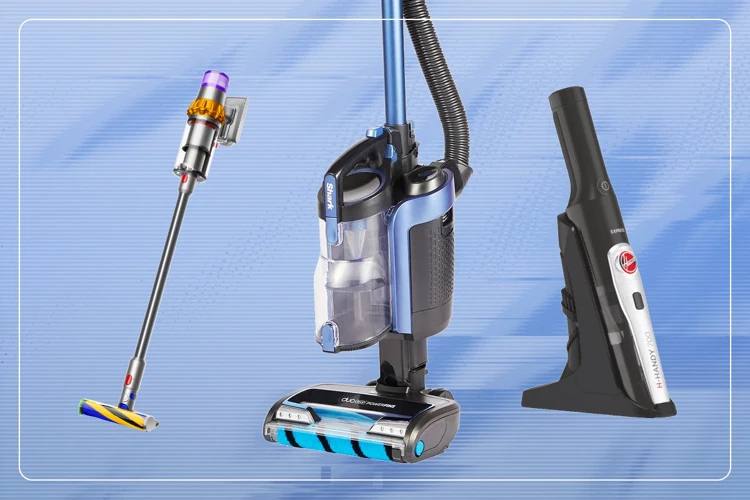
When we think about a powerful tool for cleaning, a vacuum cleaner automatically comes to mind. However, one aspect that is often overlooked when purchasing a vacuum cleaner is the amount of noise it produces. The noise level is an important consideration, especially if you are cleaning in busy households, apartments, or office spaces. There are several factors that affect vacuum cleaner noise, including type of motor, fan design, material used in body, and airflow restriction. Understanding these factors will help you make a more informed decision when selecting a vacuum cleaner that is best suited to your needs. For more information on quiet, smart vacuums that are ideal for homes and offices, check out our recommendations.
Type of Motor
When it comes to noise reduction in smart vacuum cleaners, the type of motor used can play a significant role. There are different types of motors available in the market, and choosing the right one is essential for a noise-free smart vacuum cleaner. In general, there are two types of motors used in vacuum cleaners: universal and brushless DC.
The universal motor is less expensive and compact, making it a popular choice in conventional vacuum cleaners. However, it tends to be noisier than other types of motors. The brushes in a universal motor can also wear out quickly and require frequent replacement, which can add to the maintenance costs.
On the other hand, brushless DC motors are quieter, more energy-efficient, and require less maintenance. They use a different mechanism than universal motors to generate motion, which eliminates the need for brushes. As a result, brushless DC motors generate less heat, require less maintenance, and produce low acoustic noise.
Smart vacuum cleaners that use brushless DC motors can offer several benefits, including better battery life, advanced features, and higher suction power. Incorporating a brushless DC motor in smart vacuum cleaners is vital to minimizing sound production, leading to an improved customer experience.
Choosing the type of motor for a smart vacuum cleaner requires careful consideration of its noise level, maintenance requirements, and energy efficiency. Brushless DC motors are generally the best choice for smart vacuum cleaners that aim to reduce noise levels. By choosing a brushless motor, customers can enjoy a cleaner home without any unwanted noise disruption. To learn more about the benefits of noise-reducing smart vacuum cleaners, check out this article.
Fan Design
Fan design plays a significant role in the noise reduction of a smart vacuum cleaner. The type, shape, and size of the fan blades can significantly impact the noise level. Straight, narrow blades tend to produce more noise than wider and curved ones. This is because narrow blades create a high-pitched whistling sound as air moves across the edges. On the other hand, curved blades are designed to reduce turbulence and noise, leading to quieter operation.
Additionally, an imbalanced fan can cause excessive noise and vibration. The imbalance occurs when the fan blades are not centered, causing vibrations that travel throughout the vacuum cleaner, increasing noise levels. Using high-quality materials, precision engineering, and a balanced design helps reduce noise and minimize vibration.
A fan’s speed can also affect noise levels. Smart vacuum cleaners come equipped with variable speed fans that can be programmed to operate at different speeds for different cleaning tasks. Lower speed fans create less noise, making them ideal for regular cleaning, while higher speed fans are perfect for deep cleaning. By using different fan speeds based on cleaning needs, the noise produced by the smart vacuum cleaner can be controlled.
Having a well-designed fan is crucial in achieving noise reduction in smart vacuum cleaners. It is one of several factors that manufacturers look at when designing and producing quiet models. Combining proper fan design with other factors, such as motor design and smart software, helps create smart vacuum cleaners that produce less noise. These innovative advancements in the industry are changing the way people think about vacuuming in the modern age. If you want to learn more about quiet smart vacuum cleaners, visit /smart-vacuum-noise-reduction/.
Material Used in Body
The material used in the body of a vacuum cleaner can have a significant impact on its noise level. Vacuum cleaners with a lightweight body made of plastic tend to produce more noise compared to those made of heavier, sound-absorbing materials such as metal or rubber.
In a study conducted by Consumer Reports, it was found that vacuum cleaners made of metal or rubber were generally quieter than those made of plastic. Metal vacuum cleaners also tend to have a longer lifespan compared to those made of plastic. However, metal body vacuum cleaners can be heavier and more expensive than their plastic counterparts.
Another factor to consider is the use of soundproofing materials in the body of a vacuum cleaner. Some manufacturers use foam or other types of sound-absorbing materials to dampen the noise produced by the motor and fan. This helps to reduce overall noise levels and makes the vacuum cleaner more pleasant to use.
One example of a smart vacuum cleaner with an eco-friendly and noise-reducing design is the Eufy RoboVac L70 Hybrid. The vacuum cleaner has a reinforced, anti-scratch tempered glass cover that not only reduces noise but also adds durability to the design. The tempered glass also serves as a barrier to keep noise contained within the vacuum cleaner. Additionally, the vacuum cleaner is designed to operate at a low noise level of just 55 decibels, making it one of the quietest robots on the market, according to this review.
It’s worth noting that some vacuum cleaners are designed specifically for noisy environments, such as households with pets. These vacuum cleaners feature specialized noise-reducing technology to help pet owners clean their homes without disturbing their furry friends. Check out this guide for more information on finding the perfect vacuum cleaner for pet owners.
The materials used in the body of a smart vacuum cleaner can greatly affect its noise level. Manufacturers and designers are constantly innovating and experimenting with new materials and soundproofing techniques to improve the user experience. Smart vacuum cleaners like the Eufy RoboVac L70 Hybrid demonstrate that it’s possible to have an eco-friendly, noise-reducing, and effective cleaning tool all in one. For more examples of smart vacuum noise reduction techniques, check out this article.
Airflow Restriction
The restriction of airflow can have a significant impact on the noise level of a smart vacuum cleaner. To minimize noise caused by airflow restriction, manufacturers of these types of vacuum cleaners incorporate design features that ensure smooth airflow.
Here are some key design considerations to minimize airflow restriction:
- Aerodynamic Design: Smart vacuum cleaners are designed to minimize the restriction of airflow. By using an aerodynamic design, manufacturers can streamline the airflow pathway, allowing for maximum air movement with minimal noise production.
- Intake and Exhaust: The intake and exhaust ports of the vacuum cleaner must be strategically placed. This ensures that the air moves smoothly through the vacuum cleaner’s body, without creating a bottleneck effect. By ensuring the free flow of air through the intake and exhaust ports, the vacuum cleaner operates more efficiently and quietly.
- Filter Placement: The placement of the filter within the vacuum cleaner also has a significant impact on airflow restriction. By placing the filter in the correct position, manufacturers can ensure that the air moves efficiently through the filter material. This reduces the strain on the motor and fan and reduces noise levels.
- Air Turbulence Reduction: Turbulence created when the air moves through the vacuum cleaner is a major source of noise. By incorporating design features that mitigate air turbulence (such as the addition of baffles and smooth edges), manufacturers can significantly reduce noise production.
By incorporating these design considerations into the overall design of the smart vacuum cleaner, manufacturers can minimize the airflow restriction as a source of noise production.
The Need for Noise Reduction in Smart Vacuum Cleaners
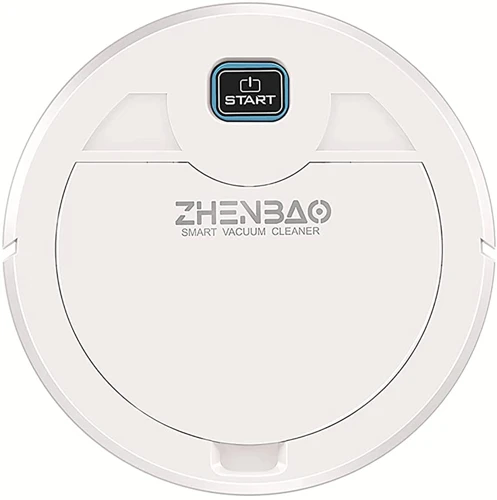
As technology continues to evolve, the demand for efficient and quiet household appliances grows stronger. The smart vacuum cleaner has become a staple in most modern homes, providing effortless cleaning with minimal human intervention. However, the constant whirring and buzzing noise generated by these machines has become a source of annoyance for many. The need for reducing noise levels in smart vacuum cleaners has become a top priority for manufacturers. In this section, we’ll explore the reasons behind the push for quieter machines and the impact it has on consumers.
For Efficient Cleaning
Efficient cleaning is one of the key reasons why noise reduction is becoming increasingly important in the design of smart vacuum cleaners. Cleaning is a tedious task, and most people prefer to invest in gadgets that can perform the job efficiently and quickly. However, traditional vacuum cleaners were often too loud to be used during the day without causing a disturbance.
With the advent of smart vacuum cleaners, this problem has been mitigated to a significant degree. These new-age vacuum cleaners come equipped with features like scheduling, self-charging, automated cleaning, and voice control. Additionally, they also have noise reduction functionalities that make them appealing to the consumer.
Table 1: Reasons why efficient cleaning is important in vacuum cleaners
| Reasons | Explanation |
|---|---|
| Quick and efficient cleaning | A smart vacuum cleaner helps save time and effort, performing the cleaning job quickly and efficiently. |
| Noise Reduction | A noisy vacuum cleaner disturbs everyone in a household or even neighborhood, but noise reduction features in a smart vacuum cleaner make it unobtrusive and easy to use. |
| Convenience | Smart vacuum cleaners are very convenient to use for their features such as scheduling, automated cleaning and voice control make them hassle-free to use. |
It is essential for a vacuum cleaner to function quietly, as the sound it produces can often be disruptive to people in the vicinity. With the adoption of intelligent design and noise reduction methods, smart vacuum cleaners are being embraced by consumers looking for efficient cleaning gadgets.
A Modern Day Requirement
Nowadays, with the advent of technology, homeowners are looking for convenient and smart solutions to enhance their household activities. The same goes for vacuum cleaners, which are now expected to be more efficient, effective, and noiseless. The modern-day requirement for a vacuum cleaner is no longer just about cleaning the floors, but also about the machine’s performance and convenience. Here are some of the key reasons why noise reduction has become a modern-day requirement for smart vacuum cleaners:
- Comfort and Convenience: Vacuuming should not be an unpleasant experience for the user. The sound of a traditional vacuum cleaner can be loud and irritating, making it difficult to concentrate on the task at hand. It can be disruptive for other people in the house, especially if someone is studying, working, or sleeping. With a noiseless smart vacuum cleaner, users can carry out their cleaning duties without worrying about the noise level.
- Safety Concerns: Some vacuum cleaners produce a high-pitched sound that can cause hearing damage and other health issues. Prolonged exposure to loud noise can cause headaches, stress, tinnitus, and other health problems. To prevent such issues, manufacturers are now designing vacuum cleaners that operate at much lower decibels. This feature is especially important for families with young children or pets.
- Energy Conservation: Many smart vacuum cleaners now feature energy-saving modes that automatically adjust the machine’s settings to conserve energy. By reducing the noise level, these machines are not only friendlier to the user’s ears but also more eco-friendly.
- Enhanced Cleaning: A noisy vacuum cleaner can be a distraction that makes it difficult to focus on detecting dust and debris. With a noiseless smart vacuum cleaner, users can focus on enhancing their cleaning experience by using the machine’s features such as better suction, longer battery life, and improved filter systems.
With the modern-day requirement for smart vacuum cleaners, noise reduction has become a key factor in their design. By reducing noise levels, manufacturers are satisfying the needs of consumers who demand convenience, safety, and efficiency from their household appliances.
Safety Concerns
When it comes to smart vacuum cleaner design, safety concerns cannot be ignored. Vacuum cleaners, like any other electronic appliances, run the risk of electrical hazards, fire, and other risks. It is important to prioritize safety in the design process to avoid accidents.
To ensure safety, smart vacuum cleaners are designed with several safety mechanisms in place. Here are a few safety features that are commonly used in vacuum cleaner design:
- Automatic shut-off: This feature automatically shuts off the vacuum cleaner if it overheats or encounters an object that jams the brush roll.
- Thermal protection: Sensors are used to detect when the motor is overheating, and the vacuum cleaner is automatically shut off to prevent it from catching fire.
- Ground fault circuit interrupter (GFCI): This is a safety mechanism that protects users from electrical shocks. It detects any imbalances in the electrical circuit and shuts off power to the vacuum cleaner if necessary.
- Cord rewind: Long cords can pose tripping hazards, so smart vacuum cleaners are designed with cord rewind mechanisms that retract the cord safely into the vacuum cleaner.
- Childproof lock: Smart vacuum cleaners are designed with locks to prevent children from accidentally turning them on or accessing the dustbin.
These are just a few examples of the safety features that can be included in smart vacuum cleaner design. Ultimately, prioritizing safety in the design process ensures that consumers have a safe and worry-free experience when cleaning their homes.
Consumer Comfort and Convenience
When it comes to cleaning the house, the smart vacuum cleaner is an essential tool for many consumers. However, nothing can be more frustrating than a vacuum cleaner that produces unbearable noise levels. Consumers demand comfort and convenience, and this includes low noise levels during operation. A silent vacuum cleaner not only ensures a peaceful home environment but also doesn’t interrupt conversations or activities.
Benefits of a Silent Smart Vacuum Cleaner
A smart vacuum cleaner with noise reduction technology provides many benefits to consumers. Firstly, it allows for efficient cleaning without the disturbance of noise. Secondly, it makes it possible to clean during the night or early morning without making noise that could wake up other members of the household or even neighbors. Thirdly, it is perfect for office or commercial environments where cleaning can occur during business hours without disturbing employees or clients.
Market Demand for a Silent Smart Vacuum Cleaner
Due to increasing market demand, many leading vacuum cleaner brands have started focusing on noise reduction technology in vacuum cleaner design. A silent vacuum cleaner has become a top priority for consumers, and manufacturers have recognized this need. As a result, manufacturers have put in extensive research and design to produce innovative, quieter vacuum cleaners. It has been observed that those vacuum cleaners that produce a lower level of noise tend to have a higher demand in the market, as consumers appreciate the focus on their comfort and convenience.
To address the need for a quiet vacuum cleaner that provides convenience to the consumers, manufacturers have incorporated various noise reduction techniques in their smart vacuum cleaner’s design. They have focused on creating a vacuum cleaner that produces less decibels and one that is pleasing to the ears when cleaning.
| Noise Reduction Technique | Benefits |
|---|---|
| Innovative motor design | Produces less noise and vibrations during operation |
| Soundproofing materials | Minimizes noise that leaks out from the device, providing a quieter cleaning experience |
| Acoustic engineering techniques | Optimizes the design of the vacuum cleaner to minimize noise and maximizes suction power |
| Smart software | Provides the convenience of a voice command and scheduling cleaner’s operation, leading to a less stressful experience |
With these noise reduction techniques combined with advanced AI, smart vacuum cleaners have become a staple of convenience and quiet cleaning. This innovation helps to guarantee a lesser psychological impact on users and provides a solution to consumers’ needs above and beyond the mere objective of cleaning homes or offices.
Techniques Used in Smart Vacuum Cleaner Design to Reduce Noise
When designing and producing smart vacuum cleaners, noise reduction becomes a critical factor to consider. The loud and disturbing noise that vacuum cleaners make is often a significant concern, leading to the development of different techniques to reduce the noise. These techniques involve various aspects such as motor and fan design, soundproofing materials, acoustic engineering, and the use of smart software. This section outlines the several approaches that engineers use in smart vacuum cleaner design to reduce noise and enhance the consumer experience. Let’s take a closer look.
Design of Motor and Fan
The design of the motor and fan are crucial factors in determining the noise output of a smart vacuum cleaner. There are several techniques used in the design process that can help reduce the noise levels produced by these components.
One important factor is the size and type of motor used in the vacuum cleaner. Brushless DC motors are a popular choice due to their efficiency and low noise output. They use electronic commutation instead of brushes, which reduces friction and noise. Additionally, larger motors can operate at lower speeds, which also contributes to a quieter operation.
The fan design also plays a significant role in reducing noise levels. There are various blade shapes and orientations that can be utilized for different noise reduction goals. For example, using wider blades can help reduce high-frequency noise, while curved blades can reduce the turbulence and resulting noise.
Material selection is another consideration when designing a quiet fan. Some materials can absorb sound waves, reducing the noise generated by the fan. For instance, composite materials or reinforced plastics have excellent sound absorbing properties.
Lastly, the speed of the fan must be optimized for noise reduction. While increasing the speed of the fan can improve suction, it also results in increased noise. Engineers need to balance the trade-off between efficient cleaning and noise control.
The following table summarizes the techniques used in the design of motor and fan for noise reduction in smart vacuum cleaners:
| Factor | Techniques |
|---|---|
| Motor | Brushless DC motor, larger size, lower speed |
| Fan Design | Wider blades for high-frequency noise reduction, curved blades for turbulence reduction |
| Material | Composite materials, reinforced plastics for sound absorption |
| Speed | Optimized speed for efficient cleaning and noise control |
The design of the motor and fan are important factors that can impact the noise levels of a smart vacuum cleaner. By considering factors such as motor type, fan design, material selection, and fan speed optimization, engineers can develop smart vacuum cleaners that are efficient, effective and quiet.
Innovative Soundproofing Materials
As the demand grows for quieter, more efficient smart vacuum cleaners, manufacturers have started to incorporate innovative soundproofing materials into their designs. These materials are designed to reduce noise levels while maintaining efficiency and suction power.
1. Foam Insulation: Foam insulation is a popular material that is used to soundproof smart vacuum cleaners. This type of insulation is designed to absorb sound waves and reduce noise levels. It is typically used in the body of the vacuum cleaner to prevent noise from escaping.
2. Acoustic Fabrics: Acoustic fabrics are specially designed textiles that are used to dampen sound waves. These fabrics are often used in the lining of the vacuum cleaner’s body to provide additional soundproofing.
3. Sound Deadening Pads: Sound deadening pads are made of rubber or other materials that are able to reduce vibrations and absorb sound waves. These pads are often used in the motor compartment of the vacuum cleaner to prevent noise from escaping.
4. Vibration Dampeners: Vibration dampeners are small rubber or silicone pads that are placed on moving parts to reduce vibrations and noise. These dampeners are often used in the motor compartment and in the brush head of the vacuum cleaner.
Incorporating these innovative soundproofing materials into smart vacuum cleaner designs has allowed manufacturers to reduce noise levels without sacrificing efficiency and power. These materials not only improve the overall user experience but also promote safety and comfort.
Acoustic engineering techniques
Acoustic engineering techniques play a vital role in the reduction of noise in smart vacuum cleaners. Let’s take a look at some of the commonly used techniques:
- Active Noise Control: This method involves the use of sound canceling technology. It utilizes a microphone to detect noise frequencies and produces the opposite frequencies to cancel them out. For smart vacuum cleaners, this technology can be used in the design of a muffler that cancels out noise from the motor.
- Precision Engineering: This technique involves the design of components such as fans, motors, and other parts with precision to minimize vibration and noise. By using high-quality components, manufacturers can construct vacuum cleaners that produce minimal noise during operation.
- Vibration Dampening: This involves the use of materials that absorb vibration and prevent it from being transferred through the body of the vacuum cleaner. Materials such as rubber and foam can be used to dampen the vibration and reduce the overall noise produced by the vacuum cleaner.
- Aerodynamic Design: The shape and design of a vacuum cleaner can also play a role in reducing noise. An aerodynamic design not only enhances the overall look of the cleaner but also reduces turbulence, which in turn reduces noise.
These techniques, when used together, can create a smart vacuum cleaner that operates at a low noise level without compromising on performance. Acoustic engineering techniques are not only limited to vacuum cleaners but are also used in the design of other electronic devices. With advancements in smart technology, we can expect manufacturers to continue to develop even quieter and more efficient vacuum cleaners in the future.
Smart Software
One of the most intriguing ways that smart vacuum cleaner designers are helping reduce noise levels is through the use of smart software. Here are some ways that they do it:
- Noise mapping: Smart vacuum cleaners often come equipped with advanced sensors that can create a noise map of the home or room. This allows the device to adjust its noise and suction levels based on the room’s layout and surface types.
- Noise monitoring: Some modern vacuum cleaners come with a microphone that allows the device to listen to the sounds in the room. It can then adjust its suction and motor speed to operate at a level that won’t disturb your household or neighbors.
- Smart scheduling: By scheduling the vacuuming process during periods when the household is generally quieter, the appliance can help reduce disturbances and noise levels throughout the day. Some models can even learn your household’s daily routine and adjust its cleaning process accordingly.
- Automated noise cancellation: Some smart software used in vacuum cleaners can sense unwanted noise levels and then try to cancel them out with noise-canceling circuits. This technology can be especially useful if you live in a noisy area or have an open-concept living space.
With smart software, vacuum cleaners can adjust their noise levels to help reduce intrusiveness in the household. By using sensors, microphones, and advanced programs, they can create a more comfortable and peaceful cleaning routine.
Conclusion
In conclusion, noise reduction is a crucial factor in the design of smart vacuum cleaners. Vacuum cleaner noise can be a nuisance, and it can also lead to potential safety hazards. Therefore, manufacturers are focusing on designing smart vacuum cleaners with reduced noise levels.
Innovative solutions have been developed to reduce vacuum cleaner noise levels. These include:
- The design of quieter motors and fans that reduce the amount of noise produced by the vacuum cleaner.
- Using modern materials with soundproofing properties to keep sound levels low.
- Utilizing acoustic engineering techniques that help to reduce, contain, and direct the noise away from the user.
- Developing smart software that detects when the vacuum cleaner is operating at too high a noise level and adjusts the settings accordingly.
The benefits of low noise vacuum cleaners are numerous:
- They enable efficient cleaning without causing discomfort to the users or disturbing neighbours.
- They meet the modern day requirement for products that are eco-friendly and energy-efficient.
- They also reduce the likelihood of hearing damage due to prolonged exposure to high noise levels.
- They provide convenience and comfort, allowing users to carry out their daily tasks in a peaceful and relaxed environment.
Overall, the development of noise reduction technology is playing a key role in the advancement of smart vacuum cleaners. Its importance in creating products that combine efficiency with convenience and safety cannot be overemphasized. The modern home requires a smart vacuum cleaner that can keep up with the demands of modern living while providing users with the much-needed peace and quiet they require. As technology continues to advance, we can expect to see more innovative solutions in the design of smart vacuum cleaners that further reduce noise levels and enhance overall performance.
Frequently Asked Questions
1. How does noise affect the efficiency of a vacuum cleaner?
High levels of noise can decrease the efficiency of a vacuum cleaner by distracting the user and reducing their ability to hear small but important sounds such as their phone ringing or a fire alarm going off.
2. What are the most common types of motors used in vacuum cleaners?
The most common types of motors used in vacuum cleaners are universal motors and DC motors. Universal motors are often found in cheaper models because they are less expensive while DC motors are more commonly used in high-end smart vacuum cleaners because they are more efficient and quieter.
3. How does the material used in the body affect the noise level of a vacuum cleaner?
The material used in the body of a vacuum cleaner can significantly impact its noise level. Plastic bodies tend to be louder than bodies made of metal because they vibrate more and transmit sound waves more readily.
4. Can soundproofing materials be added to existing vacuum cleaners to reduce noise?
Yes, it is possible to add soundproofing materials to existing vacuum cleaners to reduce noise. However, the effectiveness of the soundproofing will depend on the quality of the materials used and the design of the vacuum cleaner.
5. How do vacuum cleaners with smart software reduce noise?
Vacuum cleaners with smart software can reduce noise by optimizing the cleaning path of the cleaner and avoiding areas where it has already cleaned. This reduces the amount of time the vacuum cleaner needs to be in use and decreases overall noise levels.
6. Are vacuum cleaners with lower decibel ratings always quieter?
Not necessarily. Decibel ratings can be misleading because they only measure the loudness of sound and do not account for other factors such as the frequency of the sound or the user’s sensitivity to certain frequencies.
7. How can consumers determine the noise level of a vacuum cleaner before purchasing?
Consumers can look for vacuum cleaners with lower decibel ratings and read reviews to see what other users have reported about the noise level. Some manufacturers may also provide additional information about noise reduction techniques used in their products.
8. Can noise reduction techniques in smart vacuum cleaners also improve their energy efficiency?
Yes, many noise reduction techniques in smart vacuum cleaners can also improve their energy efficiency. This is because reducing noise often involves optimizing the design of the motor and fan to increase airflow, which can also improve suction power.
9. How important is noise reduction in vacuum cleaners for people with sensory processing disorders?
Noise reduction in vacuum cleaners can be especially important for people with sensory processing disorders because high levels of noise can be overwhelming for them and cause anxiety or stress.
10. Can noise reduction in smart vacuum cleaners make them more expensive?
Yes, noise reduction techniques in smart vacuum cleaners can increase their manufacturing costs, which can in turn make them more expensive for consumers. However, many people are willing to pay a premium for quieter, more efficient models that also provide a more convenient cleaning experience.
